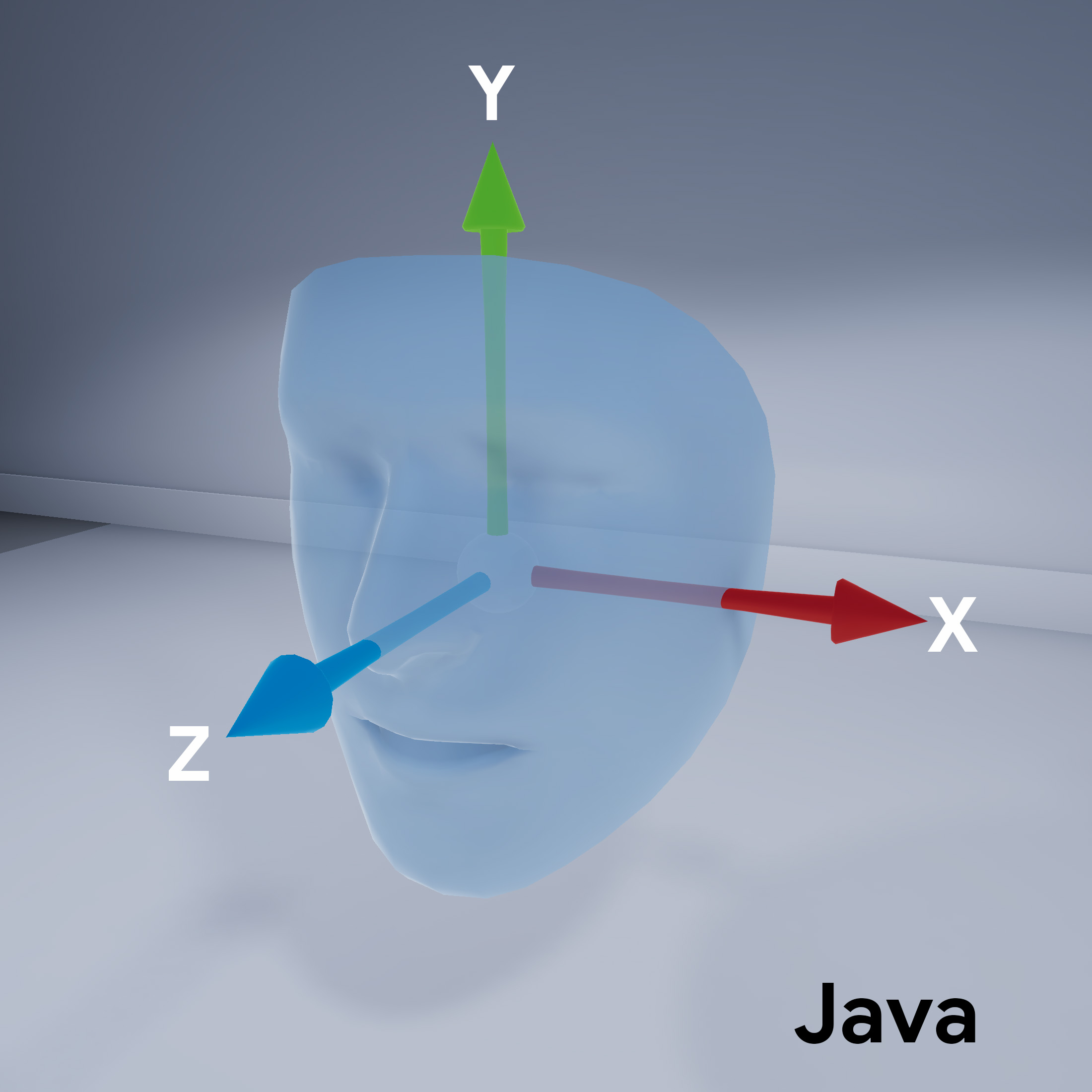Tìm hiểu cách dùng tính năng Khuôn mặt tăng cường trong các ứng dụng của bạn.
Điều kiện tiên quyết
Đảm bảo rằng bạn hiểu rõ các khái niệm cơ bản về AR và cách định cấu hình phiên ARCore trước khi tiếp tục.
Dùng tính năng Khuôn mặt tăng cường trong Android
Định cấu hình phiên ARCore
Hãy chọn camera trước trong phiên ARCore hiện có để bắt đầu sử dụng Khuôn mặt tăng cường. Lưu ý: Chọn camera trước sẽ gây ra một số thay đổi về hành vi ARCore.
Java
// Set a camera configuration that usese the front-facing camera. CameraConfigFilter filter = new CameraConfigFilter(session).setFacingDirection(CameraConfig.FacingDirection.FRONT); CameraConfig cameraConfig = session.getSupportedCameraConfigs(filter).get(0); session.setCameraConfig(cameraConfig);
Kotlin
// Set a camera configuration that usese the front-facing camera. val filter = CameraConfigFilter(session).setFacingDirection(CameraConfig.FacingDirection.FRONT) val cameraConfig = session.getSupportedCameraConfigs(filter)[0] session.cameraConfig = cameraConfig
Bật AugmentedFaceMode:
Java
Config config = new Config(session); config.setAugmentedFaceMode(Config.AugmentedFaceMode.MESH3D); session.configure(config);
Kotlin
val config = Config(session) config.augmentedFaceMode = Config.AugmentedFaceMode.MESH3D session.configure(config)
Hướng lưới của mặt
Lưu ý hướng của lưới khuôn mặt:
Truy cập vào khuôn mặt được phát hiện
Nhận Trackable
cho từng khung hình. Trackable là thứ mà ARCore có thể theo dõi và
Có thể đính kèm các neo.
Java
// ARCore's face detection works best on upright faces, relative to gravity. Collection<AugmentedFace> faces = session.getAllTrackables(AugmentedFace.class);
Kotlin
// ARCore's face detection works best on upright faces, relative to gravity. val faces = session.getAllTrackables(AugmentedFace::class.java)
Tải TrackingState
cho mỗi Trackable. Nếu trạng thái là TRACKING,
thì tư thế của nó hiện được ARCore biết đến.
Java
for (AugmentedFace face : faces) { if (face.getTrackingState() == TrackingState.TRACKING) { // UVs and indices can be cached as they do not change during the session. FloatBuffer uvs = face.getMeshTextureCoordinates(); ShortBuffer indices = face.getMeshTriangleIndices(); // Center and region poses, mesh vertices, and normals are updated each frame. Pose facePose = face.getCenterPose(); FloatBuffer faceVertices = face.getMeshVertices(); FloatBuffer faceNormals = face.getMeshNormals(); // Render the face using these values with OpenGL. } }
Kotlin
faces.forEach { face -> if (face.trackingState == TrackingState.TRACKING) { // UVs and indices can be cached as they do not change during the session. val uvs = face.meshTextureCoordinates val indices = face.meshTriangleIndices // Center and region poses, mesh vertices, and normals are updated each frame. val facePose = face.centerPose val faceVertices = face.meshVertices val faceNormals = face.meshNormals // Render the face using these values with OpenGL. } }


